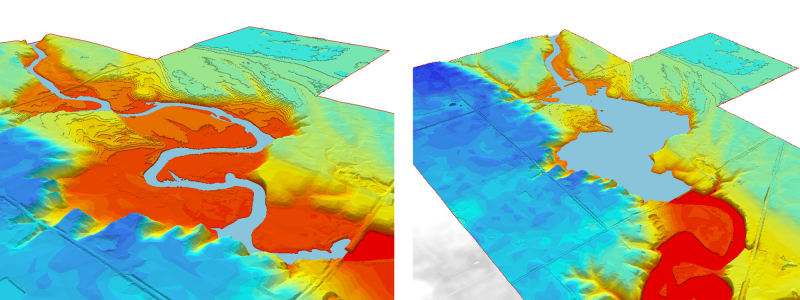Lake Mitchell near Mitchell, SD is a man-made reservoir originally designed to serve as the city’s drinking water supply and recreational hub for the surrounding area. Today, it exists essentially as a recreational lake after the city connected to the B-Y Rural Water System in the early 2000s, bringing pre-treated Missouri River water to Mitchell. Water quality, however, has been in a steady decline and Lake Mitchell’s annual, summer-long algae bloom issues have been well documented.
Much of Lake Mitchell’s problems derive from the excessive nutrients that enter the lake from its primary feeder stream, Firesteel Creek. While lakes naturally age over a long period of time, the process can be accelerated significantly as a result of human activities (called cultural eutrophication). Eutrophic lakes are rich in nutrients and usually become highly productive. Eutrophic lakes can become green with algae or choked with other aquatic plants. The ensuing vegetative die-off can also potentially lead to hypoxic conditions and odor problems. The main nutrient that drives eutrophication in most freshwater systems is phosphorus.
In 2019, the City of Mitchell made a real estate purchase involving property along Firesteel Creek above Lake Mitchell. The purchase was made with the intent of using the property to improve the water quality of Lake Mitchell by establishing a practice or practices aimed at reducing the amount of phosphorus entering Lake Mitchell. The city then contacted the SDSU Department of Agricultural & Biosystems Engineering (ABE) to gauge interest in a collaborative effort to design a best management practice for the property.

ABE students, as a senior design project, recommended constructing a retention structure on the property in order to reduce the phosphorus content entering Lake Mitchell. The main transport mechanism for phosphorus is attachment to soil particles. A low-head dam would spread the water across the property, decrease the velocity of the flow, and allow for sediment deposition before reaching Lake Mitchell. It was also recommended that a multi-stage riser be incorporated into the low-head dam to help manage flow rates. A riser structure will effectively allow flow through the dam at various stages instead of being just dependent on the top of the dam as the only means of control. A final report was sent to the City of Mitchell in early May, which will be used to help determine if the project is to move forward.


